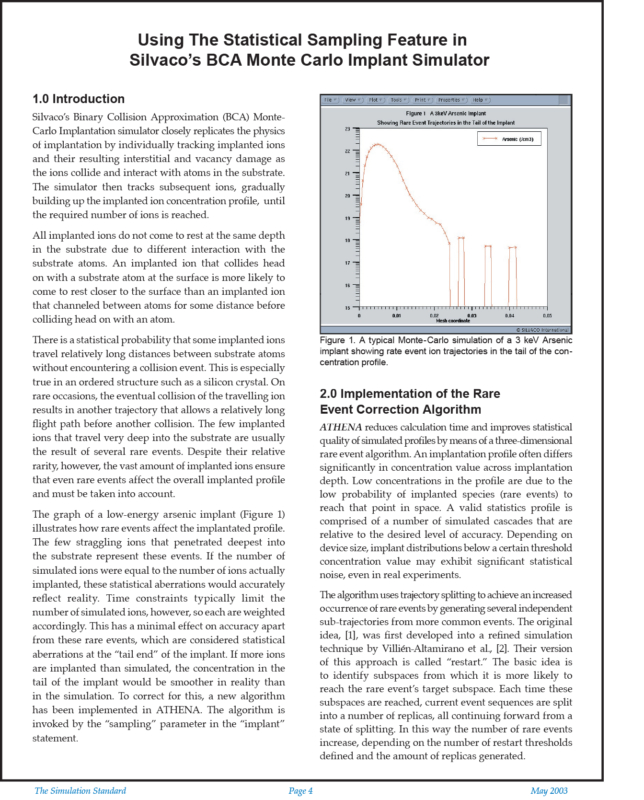Using The Statistical Sampling Feature in the BCA Monte Carlo Implant Simulator
Introduction
Silvaco’s Binary Collision Approximation (BCA) Monte- Carlo Implantation simulator closely replicates the physics of implantation by individually tracking implanted ions and their resulting interstitial and vacancy damage as the ions collide and interact with atoms in the substrate. The simulator then tracks subsequent ions, gradually building up the implanted ion concentration profile, until the required number of ions is reached.
All implanted ions do not come to rest at the same depth in the substrate due to different interaction with the substrate atoms. An implanted ion that collides head on with a substrate atom at the surface is more likely to come to rest closer to the surface than an implanted ion that channeled between atoms for some distance before colliding head on with an atom.
There is a statistical probability that some implanted ions travel relatively long distances between substrate atoms without encountering a collision event. This is especially true in an ordered structure such as a silicon crystal. On rare occasions, the eventual collision of the travelling ion results in another trajectory that allows a relatively long flight path before another collision. The few implanted ions that travel very deep into the substrate are usually the result of several rare events. Despite their relative rarity, however, the vast amount of implanted ions ensure that even rare events affect the overall implanted profile and must be taken into account.


